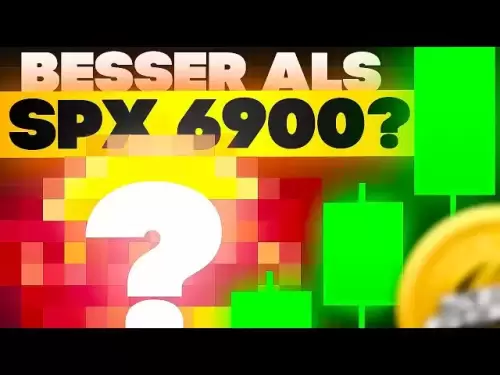-
 Bitcoin
Bitcoin $109,507.9823
0.43% -
 Ethereum
Ethereum $2,716.0274
3.79% -
 Tether USDt
Tether USDt $1.0003
-0.01% -
 XRP
XRP $2.3859
3.05% -
 BNB
BNB $665.2705
0.56% -
 Solana
Solana $154.6874
1.56% -
 USDC
USDC $1.0002
0.02% -
 TRON
TRON $0.2896
1.05% -
 Dogecoin
Dogecoin $0.1738
1.67% -
 Cardano
Cardano $0.6117
3.72% -
 Hyperliquid
Hyperliquid $40.3052
3.82% -
 Sui
Sui $2.9817
2.08% -
 Bitcoin Cash
Bitcoin Cash $505.0944
0.71% -
 Chainlink
Chainlink $14.0820
1.96% -
 Stellar
Stellar $0.2902
12.90% -
 UNUS SED LEO
UNUS SED LEO $9.0423
-0.34% -
 Avalanche
Avalanche $18.7084
1.54% -
 Hedera
Hedera $0.1714
6.33% -
 Shiba Inu
Shiba Inu $0.0...01218
2.48% -
 Toncoin
Toncoin $2.8261
1.24% -
 Litecoin
Litecoin $88.8228
1.59% -
 Monero
Monero $319.1344
2.71% -
 Polkadot
Polkadot $3.5479
2.69% -
 Dai
Dai $1.0001
0.00% -
 Ethena USDe
Ethena USDe $1.0010
0.06% -
 Uniswap
Uniswap $8.2690
6.49% -
 Bitget Token
Bitget Token $4.3622
1.19% -
 Aave
Aave $298.5989
2.11% -
 Pepe
Pepe $0.0...01042
1.97% -
 Pi
Pi $0.4663
1.15%
How to use the MetaMask built-in bridge feature?
MetaMask's built-in bridge lets users transfer assets between blockchains like Ethereum and Polygon directly within the wallet, simplifying cross-chain transactions.
Jul 09, 2025 at 06:29 pm
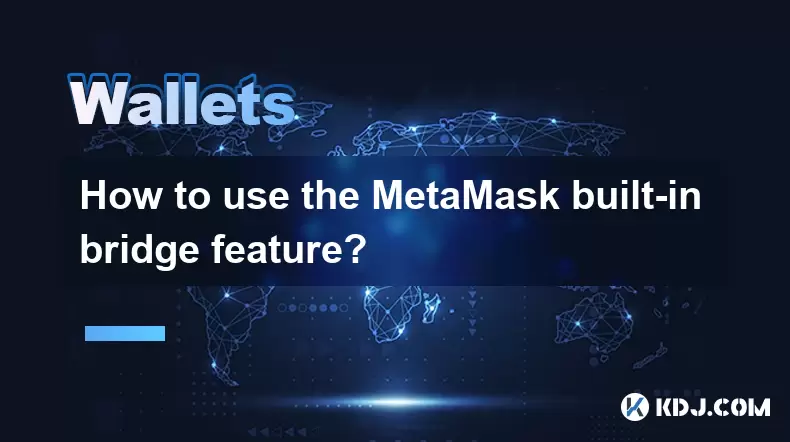
What is the MetaMask Built-in Bridge Feature?
The MetaMask built-in bridge feature allows users to transfer assets between different blockchain networks directly within the MetaMask wallet interface. This functionality eliminates the need for third-party platforms when moving tokens such as ETH or ERC-20 tokens across compatible chains like Ethereum, Binance Smart Chain, Polygon, and others. The bridge simplifies cross-chain transactions by offering a user-friendly interface that guides you through each step without requiring advanced technical knowledge.
How Does the MetaMask Bridge Work?
At its core, the MetaMask bridge works by locking assets on one chain and minting equivalent tokens on another. When you initiate a transfer from Ethereum to Polygon, for example, your ETH or token is locked in a smart contract on the Ethereum network, and an equal amount of the same asset is released on the Polygon side. This process ensures that no new tokens are created out of thin air, maintaining the integrity and value of the original asset. Users can reverse this process to bring their assets back to the originating chain.
Setting Up Your MetaMask Wallet for Cross-Chain Transfers
Before using the MetaMask bridge, ensure your wallet supports the networks you intend to interact with. You may need to manually add custom networks if they aren't pre-configured. To do this:
- Open MetaMask and click on the network dropdown at the top
- Select “Add Network”
- Choose “Add a network manually” and input the required RPC URL, chain ID, currency symbol, and block explorer URL for the target network
Once added, switch between networks seamlessly using the same dropdown menu. Ensure you have sufficient native tokens (e.g., MATIC for Polygon) on both chains to cover gas fees before initiating any transfers.
Initiating a Transfer via the MetaMask Bridge
To begin a cross-chain transfer using the MetaMask bridge, follow these steps:
- Connect your MetaMask wallet to the source network where your assets reside
- Click on the “Bridge” tab located in the navigation bar inside the wallet interface
- Select the asset you wish to transfer
- Choose the destination network from the drop-down options
- Enter the amount you want to move
- Review the estimated gas fees and transaction time
After confirming all details, sign the transaction using your MetaMask wallet. The actual transfer duration varies depending on network congestion and blockchain confirmation times, but most transfers complete within minutes.
Monitoring and Confirming Your Cross-Chain Transaction
Once initiated, it's crucial to monitor your MetaMask bridge transaction status. You can track progress directly from the “Activity” tab in your wallet or by copying the transaction hash and pasting it into the appropriate block explorer for the source or destination chain. If the receiving wallet doesn’t show the transferred tokens immediately, wait for finality on the destination network. In rare cases, delays may occur due to high traffic or backend issues with the bridge provider. Always double-check the recipient address and network compatibility before initiating a transfer.
Frequently Asked Questions
Q: Can I use the MetaMask bridge for NFTs?
Yes, some versions of the MetaMask bridge support NFT transfers, though not all bridges handle non-fungible tokens. Before attempting to send NFTs, verify whether the bridge in use supports them and ensure the receiving wallet on the destination chain is configured correctly.
Q: Are there fees associated with using the MetaMask bridge?
Yes, users must pay gas fees on both the source and destination chains. These fees fluctuate based on network demand and are separate from any service charges the bridge might impose. Always check the total cost before proceeding.
Q: Is the MetaMask bridge safe to use?
The MetaMask bridge is generally secure, especially since it’s integrated into a trusted wallet environment. However, always ensure you're using the official MetaMask application and avoid phishing sites. Never share your seed phrase or private keys during any bridge transaction.
Q: Why didn’t my bridged tokens arrive immediately?
Delays can occur due to network latency, high congestion, or backend processing time. Check the transaction status using the provided hash and allow extra time if the destination chain is experiencing heavy usage.
Disclaimer:info@kdj.com
The information provided is not trading advice. kdj.com does not assume any responsibility for any investments made based on the information provided in this article. Cryptocurrencies are highly volatile and it is highly recommended that you invest with caution after thorough research!
If you believe that the content used on this website infringes your copyright, please contact us immediately (info@kdj.com) and we will delete it promptly.
- NEXBRIDGE, NEXPLACE, and the Bitcoin Ecosystem: Building a New Financial Frontier
- 2025-07-09 23:10:13
- MEXC Launchpad & PUMP Token: Grab a 40% Discount?
- 2025-07-09 22:50:12
- Trade System Revolution: How XDC and the End of Faxes Are Reshaping Finance
- 2025-07-09 23:10:13
- Ripple, CLARITY Act, and the XRP Case: A New York Minute on Crypto Regulation
- 2025-07-09 23:50:12
- No Rs 50 Coin? Delhi HC Hears Why India Prefers Banknotes
- 2025-07-09 23:15:11
- No Rs 50 Coin? Delhi HC Hears Why Banknotes Reign Supreme
- 2025-07-09 23:50:12
Related knowledge

How to find a specific receiving address on my Trezor
Jul 09,2025 at 10:36pm
Understanding the Purpose of a Receiving AddressA receiving address is a unique identifier used in blockchain networks to receive cryptocurrency. Each...

How to connect Trezor to Rabby wallet
Jul 09,2025 at 05:49am
What Is Trezor and Rabby Wallet?Trezor is a hardware wallet developed by SatoshiLabs that allows users to securely store their cryptocurrency assets o...
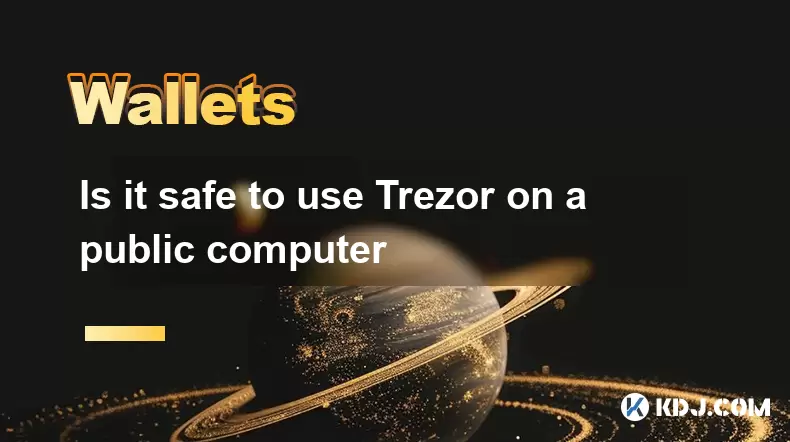
Is it safe to use Trezor on a public computer
Jul 09,2025 at 08:56pm
Understanding the Risks of Using Trezor on a Public ComputerUsing a Trezor hardware wallet is generally considered one of the most secure methods for ...

What happens if I forget my Trezor passphrase
Jul 09,2025 at 03:15am
Understanding the Role of a Trezor PassphraseIf you use a Trezor hardware wallet, you may have set up a passphrase as an extra layer of security beyon...
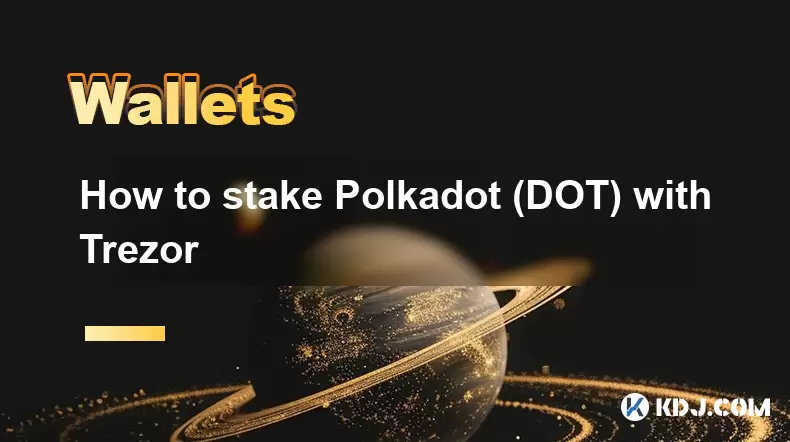
How to stake Polkadot (DOT) with Trezor
Jul 09,2025 at 09:42pm
Understanding Polkadot (DOT) StakingStaking Polkadot (DOT) allows users to participate in network validation and earn rewards. Unlike traditional proo...
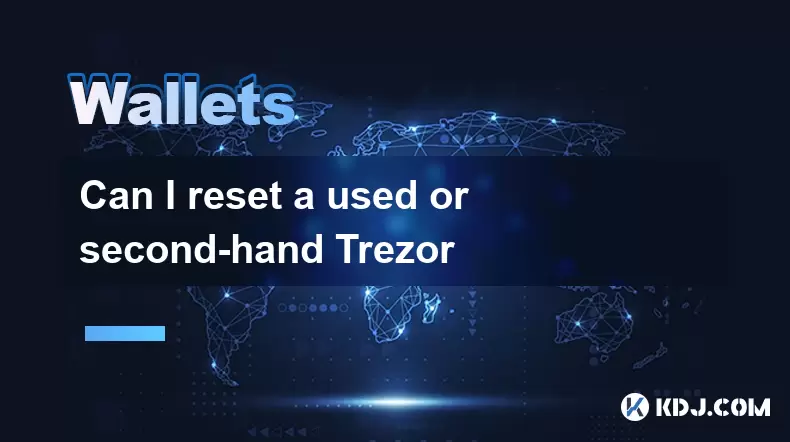
Can I reset a used or second-hand Trezor
Jul 09,2025 at 11:49am
Understanding the Reset Process for a Used or Second-Hand TrezorIf you have acquired a used or second-hand Trezor wallet, one of the first things you ...

How to find a specific receiving address on my Trezor
Jul 09,2025 at 10:36pm
Understanding the Purpose of a Receiving AddressA receiving address is a unique identifier used in blockchain networks to receive cryptocurrency. Each...

How to connect Trezor to Rabby wallet
Jul 09,2025 at 05:49am
What Is Trezor and Rabby Wallet?Trezor is a hardware wallet developed by SatoshiLabs that allows users to securely store their cryptocurrency assets o...

Is it safe to use Trezor on a public computer
Jul 09,2025 at 08:56pm
Understanding the Risks of Using Trezor on a Public ComputerUsing a Trezor hardware wallet is generally considered one of the most secure methods for ...

What happens if I forget my Trezor passphrase
Jul 09,2025 at 03:15am
Understanding the Role of a Trezor PassphraseIf you use a Trezor hardware wallet, you may have set up a passphrase as an extra layer of security beyon...

How to stake Polkadot (DOT) with Trezor
Jul 09,2025 at 09:42pm
Understanding Polkadot (DOT) StakingStaking Polkadot (DOT) allows users to participate in network validation and earn rewards. Unlike traditional proo...

Can I reset a used or second-hand Trezor
Jul 09,2025 at 11:49am
Understanding the Reset Process for a Used or Second-Hand TrezorIf you have acquired a used or second-hand Trezor wallet, one of the first things you ...
See all articles























